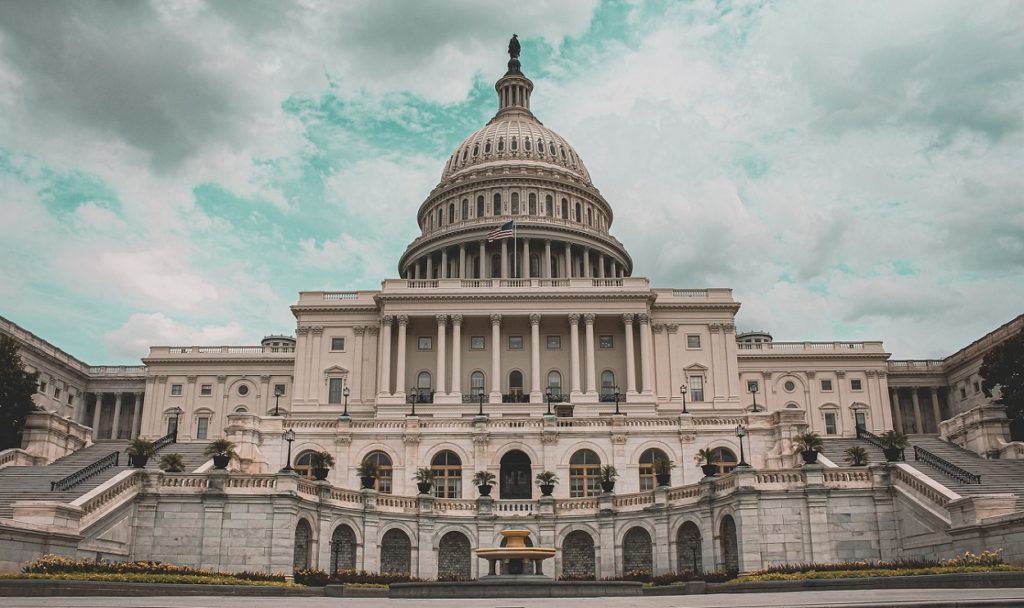
As 2023 comes to an end, PV Tech is looking back on the year in solar, reflecting on some of the biggest stories and trends of the last 12 months. Following Q1, this instalment looks into the reemergence of the AD/CVD case in the US, technology at the year’s biggest trade shows and the dramatic decline in polysilicon prices.
AD/CVD raises its head in the US
Q2 2023 opened with a familiar discussion, one centred on the antidumping/countervailing duty (AD/CVD) import tariffs, which met opposition in the US government.
Try Premium for just $1
- Full premium access for the first month at only $1
- Converts to an annual rate after 30 days unless cancelled
- Cancel anytime during the trial period
Premium Benefits
- Expert industry analysis and interviews
- Digital access to PV Tech Power journal
- Exclusive event discounts
Or get the full Premium subscription right away
Or continue reading this article for free
The entire AD/CVD saga spans several years. An investigation based on allegations from Auxin Solar ultimately found a number of Chinese-owned solar manufacturers guilty of circumventing US import tariffs by relocating small parts of their operations to Southeast Asia. The findings were waived by an executive order from President Joe Biden, which meant that the AD/CVD tariffs on those imports would not come into force until mid-2024. At the time, around 80% of the US’ solar supply came from operations in Southeast Asia.
In April 2023, Congress considered a vote to repeal Biden’s waiver and reinstate the tariffs, prompting a body of over 400 US solar companies – led by the Solar Energy Industries Association (SEIA) – to send a letter petitioning Congress to uphold the waiver to allow the US solar industry time to shore itself up against the impacts of the tariffs. Those impacts, according to the SEIA, would run to the tune of US$1 billion in retroactive duties and lead to the cancellation of projects with 4GW of solar capacity.
Despite the Inflation Reduction Act’s incentives, the industry was still in the early stages of building out any meaningful domestic PV supply, as it still is today. Both the SEIA and the bipartisan Congress group seeking to enforce the duties invoked “American interests” in their arguments. The SEIA said that the US’ energy transition and growing solar industry would be run aground by the tariffs just as it was getting wind in its sails, whilst the lawmakers said that allowing cheap, mass imports of ostensibly Chinese-made modules was undermining US businesses and its re-emerging manufacturing sector.
The vote passed Congress, the House of Representative and the Senate before landing on Biden’s desk, where the President vetoed the vote, keeping his waiver in place until next year.
Tech-driven trade shows
Whilst the US was infighting, the biggest players in the solar industry were flexing their muscles at the largest trade shows of the year. SNEC 2023 in China and Intersolar Europe took place in Q2, and the transition to n-type technology was at centre stage.
The largest manufacturers in the solar industry, including JA Solar, Trina Solar and LONGi, all showcased their newest n-type modules and cells on the tradeshow floor at SNEC. The show highlighted, amongst manufacturers big and small, the emergence of tunnel oxide passivated contact (TOPCon) as the leading solar technology for the coming years.
Heterojunction technology (HJT) products were also gathering momentum, and companies made much of exhibiting their latest research and development into back-contact and perovskite tech.
Intersolar saw the trend continue, with companies like cell producer Jeitai and Sunova exhibiting a range of high-efficiency and varied products for the market.
Another major trend emerging from these shows was the sheer scale of the industry. Solar is decidedly “mature” at this point and, as exhibited in PV Tech’s discussion with TW Solar, the competition is fierce amongst the biggest manufacturers on volume, technology and price.
Price drops begin in earnest
The price of polysilicon, which had started to move downhill towards the end of Q1, began running down in April and fell off a cliff by June.
On 12 April, average prices for solar-grade polysilicon were between RMB190-200/kg (US$26.47-27.87/kg) according to the Silicon Industry Branch of the China Nonferrous Metals Industry Association, with a low of RMB180 (US$26.2).
A month later, on 8 May, the average poly price was between RMB153-166.5/kg (US$21.32-23.2/kg) and predictions were that by the end of June it could drop as low as RMB100/kg (US$14.4).
As events would have it, on the week commencing 19 June, the average polysilicon price was RMG60/kg (US$8.3/kg), far below predictions from the month before. The price drops were due to a wave of new polysilicon capacity coming online in China while demand remained fairly consistent, which created an oversupply situation and put pressure on producers. The Silicon Industry Branch also explained that production costs had generally dropped and demand had grown slower than expected in certain sectors.
These price drops would reverberate upstream into the supply chain. In late May, LONGi announced a drop in its silicon wafer prices of over 30%; 150μm M10 mono p-type wafer was adjusted from RMB6.3 (US$0.89) to RMB4.36 (US$0.61). The rest of the year saw prices drop across the board, and industry commentators begin to forecast downturns into 2024.






